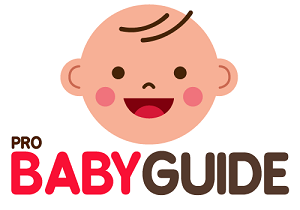Introduction: Why Sleep Training is a Game-Changer for Babies and Parents
Every parent knows the struggle of sleepless nights when their baby refuses to settle down or wakes up frequently. While it’s normal for newborns to have erratic sleep patterns, establishing a consistent sleep routine becomes crucial as they grow older. A best baby sleep training schedule can help guide parents in creating a predictable and effective routine tailored to their infant’s needs. According to a study published in Pediatrics , over 25 percent of parents report significant sleep challenges with their infants, leading to stress, fatigue, and even postpartum depression in some cases.
The good news? A well-structured sleep training schedule can transform not only your baby’s rest but also your quality of life. In this comprehensive guide, we’ll explore everything you need to know about creating the best baby sleep training schedule —from understanding developmental milestones to implementing tried-and-tested techniques. Whether you’re a first-time parent or looking to refine your approach, this article has got you covered.
Understanding Baby Sleep Patterns: What Science Tells Us
Before diving into schedules and methods, it’s essential to understand how babies naturally sleep. Unlike adults who aim for uninterrupted 7-8 hours of rest, infants experience shorter cycles of active (REM) and quiet (non-REM) sleep. Here’s what science reveals:
Newborn Sleep Cycles
Newborns spend around 14-17 hours sleeping daily, divided into brief naps ranging from 30 minutes to 4 hours. Their biological clock isn’t fully developed yet, so they often mix up day and night.
Developmental Milestones That Impact Sleep
As babies grow, several milestones affect their sleep:
- 4-Month Sleep Regression : At this stage, sleep cycles mature, causing frequent wake-ups.
- Teething : Discomfort during teething phases disrupts sleep temporarily.
- Crawling/Walking : Physical developments may lead to restless nights due to increased activity levels.
Understanding these factors helps set realistic expectations and prepares you for potential hurdles while crafting a sleep schedule.
Crafting the Best Baby Sleep Training Schedule: Step-by-Step Guide
Now that we’ve laid the groundwork let’s dive into practical steps to create an effective sleep training plan tailored to your baby’s needs.
Step 1: Establish a Consistent Bedtime Routine
A predictable bedtime ritual signals to your baby that it’s time to wind down. Activities like bathing, reading, or gentle rocking work wonders. Research shows that routines reduce anxiety and improve overall sleep quality by 20%.
Pros & Cons
Pros:
- Helps regulate the body’s internal clock.
- Strengthens parent-child bonding.
Cons:
- Requires consistency, which might feel challenging initially.
- Some babies resist changes in routine.
Step 2: Choose a Sleep Training Method That Works for You

There are various approaches to sleep training, each with its pros and cons. Below are three popular methods:
1. Cry It Out (CIO)
This method involves letting your baby cry for short intervals before offering comfort. While controversial, studies suggest that controlled crying doesn’t harm emotional development if done correctly.
2. Ferber Method
Similar to CIO but involves gradually increasing wait times between checks. Many parents find this less stressful than full-blown CIO.
3. No-Tears Approach
Gentler alternatives focus on soothing techniques without leaving the baby alone. Dr. William Sears advocates co-sleeping and responsive parenting, emphasizing attachment over independence.
Expert Opinion
Dr. Harvey Karp, author of The Happiest Baby on the Block , recommends combining elements of all methods based on individual temperament. “Every baby is unique,” he says. “What works for one family might not suit another.”
Step 3: Align Wake Windows with Age-Appropriate Guidelines
Wake windows refer to the amount of time a baby stays awake between naps. Overstimulation leads to overtiredness, making it harder to fall asleep.
| Age | Ideal Wake Window |
| 0-3 months | 45-60 minutes |
| 4-6 months | 1.5-2 hours |
| 7-9 months | 2-3 hours |
| 10-12 months | 3-4 hours |
By sticking to age-appropriate wake windows, you ensure your baby is neither under-stimulated nor overtired.
Step 4: Optimize Your Baby’s Sleep Environment
Creating a conducive sleep space is non-negotiable. Consider these tips:
- Use blackout curtains to block out light.
- Maintain a cool room temperature (around 68°F).
- Invest in a white noise machine to drown out household sounds.
Studies indicate that optimizing environmental factors improves sleep duration by up to 30%.
Real-Life Success Stories: How Other Parents Nailed Sleep Training
Hearing from other parents provides inspiration and reassurance. Take Sarah, a mom of twins, who struggled with nighttime feedings until she implemented a strict schedule at six months. “It was tough at first, but within two weeks, both girls were sleeping through the night,” she shares.
Similarly, Mark, a father of a colicky infant, found success with the no-tears approach. “I couldn’t bear hearing him cry, so I held him close during every nap transition. Slowly, he began associating sleep with calmness rather than distress.”
These stories highlight that there’s no one-size-fits-all solution—flexibility and patience are key.
Read More: Baby Bassinet Rocker Essentials: Soothe and Sleep Solutions
FAQs About the Best Baby Sleep Training Schedule
Q1: When should I start sleep training?
A1: Most experts recommend starting between 4-6 months when sleep cycles stabilize and your baby is developmentally ready.
Q2: Will sleep training cause long-term harm?
A2: No. Research shows that properly executed sleep training does not negatively impact emotional or psychological health.
Q3: How do I handle nighttime feedings during sleep training?
A3: Gradually reduce feeding sessions while ensuring your baby still meets their nutritional needs, especially for younger infants.
Q4: What if my baby cries a lot during sleep training?
A4: Crying is normal as your baby adjusts. Use methods like check-ins or gentle soothing to provide reassurance without abandoning the process.
Q5: Can I sleep train if my baby is teething?
A5: Yes, but be flexible. Teething discomfort may temporarily disrupt sleep, so offering extra comfort during this phase is okay.
Q6: How long does sleep training take to work?
A6: Most parents see improvements within 1-2 weeks, though consistency is key to achieving lasting results.
Q7: Should I wake my baby up for naps or bedtime?
A7: Avoid waking them unnecessarily. Focus on aligning wake windows and maintaining a consistent schedule instead.
Q8: What’s the best method for sensitive babies?
A8: Gentle, no-tears approaches often work better for sensitive babies who struggle with separation anxiety.
Q9: Can I co-sleep while sleep training?
A9: Co-sleeping can make sleep training harder, but it’s possible with clear boundaries. Ensure safe co-sleeping practices if you choose this route.
Q10: How do I deal with sleep regressions?
A10: Stay consistent with your schedule despite regressions. They’re temporary phases caused by developmental milestones and usually pass within 2-6 weeks.
Conclusion: Empower Yourself with Knowledge
Crafting the best baby sleep training schedule requires patience, persistence, and adaptability. By combining scientific insights with personalized strategies, you can create a routine that benefits both you and your baby. Remember, every child is unique, and what matters most is finding what works for your family.
With this guide, you’re equipped to tackle sleep challenges head-on. Sweet dreams await!
Let me know if you’d like me to expand any section further!
Read More:
Sleep Solutions: A Guide to Helping Your Baby Adjust to a Travel Bassinet
DIY Bassinet Decor Ideas: Adding Personal Touches to Your Baby’s Sleep Space




